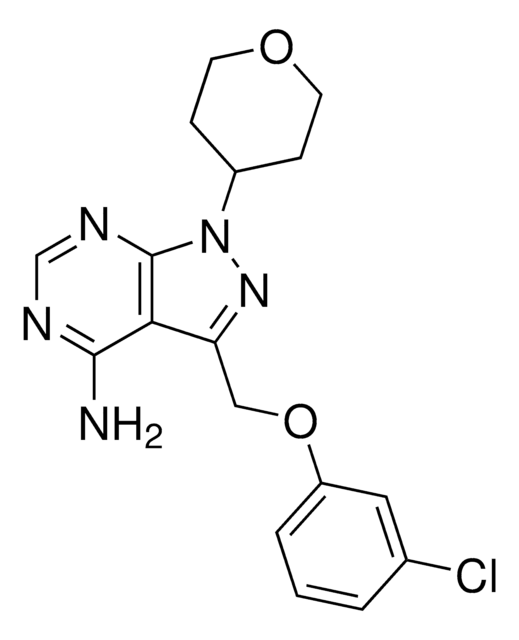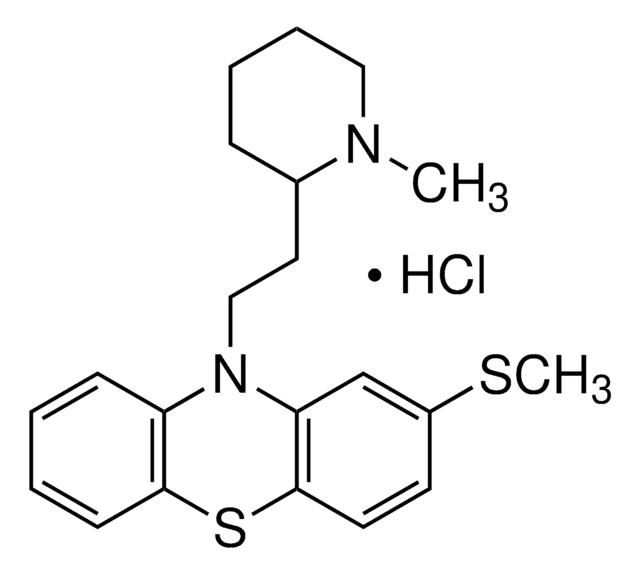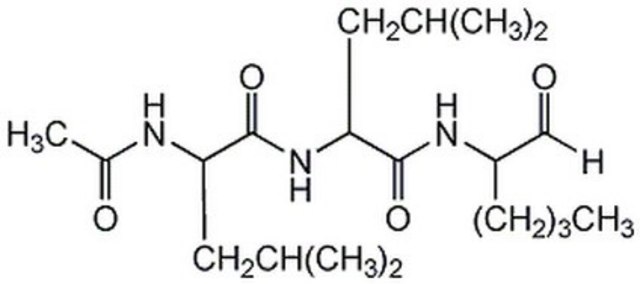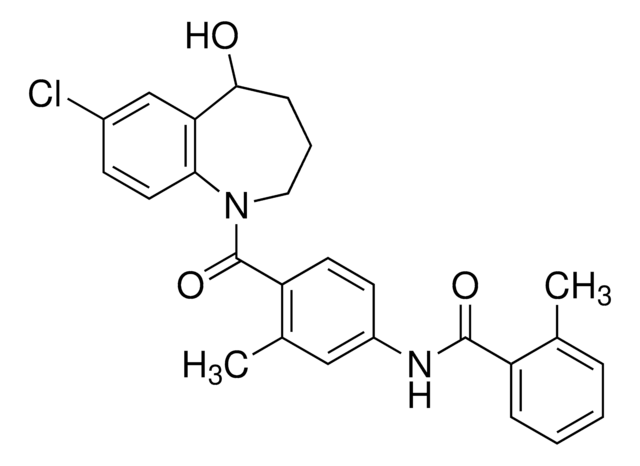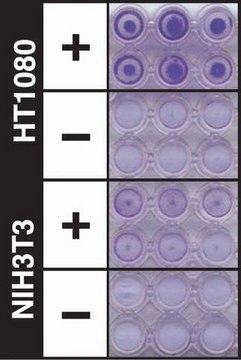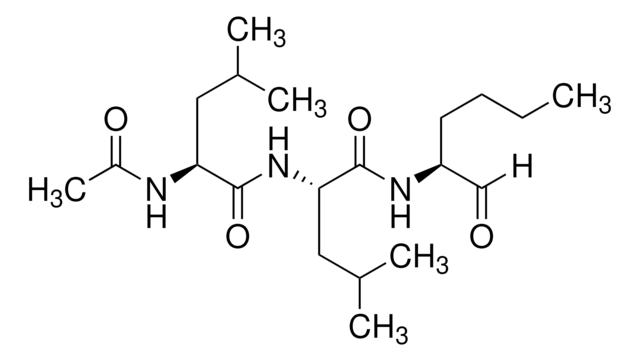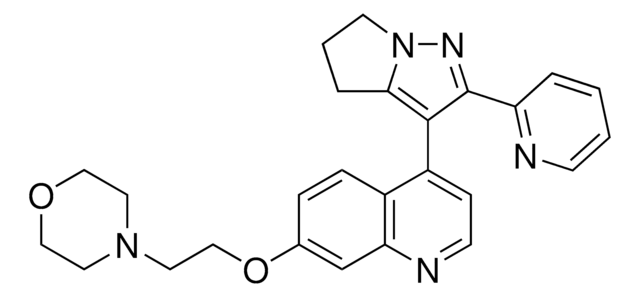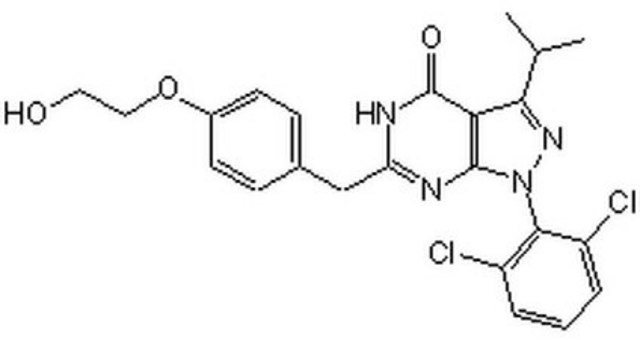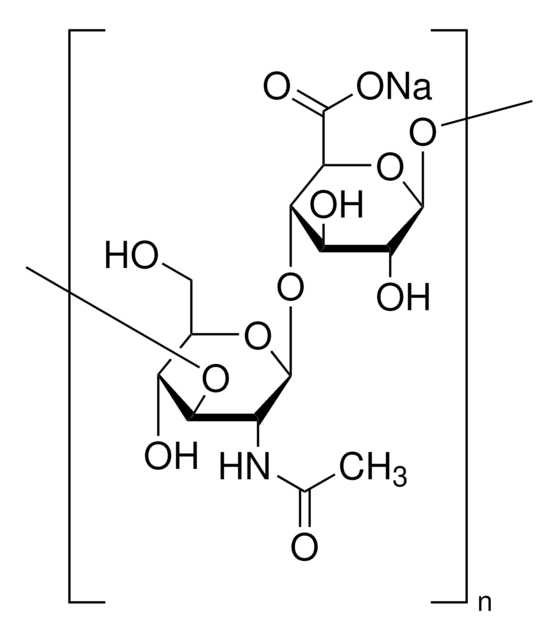233100
CL-387,785
A cell-permeable and irreversible inhibitor of EGF-receptor (EGFR) kinase activity in vivo (IC₅₀ = 250-490 pM) as well as EGF-stimulated autophosphorylation of tyrosine residues in the EGFR in vivo (IC₅₀ = 5 nM).
Sign Into View Organizational & Contract Pricing
All Photos(1)
Synonym(s):
CL-387,785, N-[4-[(3-Bromophenyl)amino]-6-quinazolinyl]-2-butynamide, EKI-785
Empirical Formula (Hill Notation):
C18H13BrN4O
Recommended Products
Quality Level
Assay
≥95% (HPLC)
form
solid
manufacturer/tradename
Calbiochem®
storage condition
OK to freeze
desiccated (hygroscopic)
protect from light
color
pale yellow
solubility
DMSO: 200 mg/mL
shipped in
ambient
storage temp.
−20°C
InChI
1S/C18H13BrN4O/c1-2-4-17(24)22-14-7-8-16-15(10-14)18(21-11-20-16)23-13-6-3-5-12(19)9-13/h3,5-11H,1H3,(H,22,24)(H,20,21,23)
InChI key
BTYYWOYVBXILOJ-UHFFFAOYSA-N
General description
A cell-permeable and irreversible inhibitor of EGF-receptor (EGFR) kinase activity in vivo (IC50 = 250-490 pM) as well as EGF-stimulated autophosphorylation of tyrosine residues in the EGFR in vivo (IC50 = 5 nM). Blocks EGF-mediated growth in A431 cells. Inhibits proliferation of EGFR or c-ErbB2 expressing cells (IC50 = 31-125 nM) by covalently binding to the EGFR.
A cell-permeable and irreversible inhibitor of EGF-stimulated autophosphorylation of tyrosine residues in the epidermal growth factor receptor (EGFR) in vivo (IC50 = 250-490 pM) and blocks EGF-mediated growth. Also inhibits proliferation of cells that overexpress EGFR or c-Erb-2 (IC50 = 31-125 nM) by covalently binding to EGFR.
Biochem/physiol Actions
Cell permeable: yes
Primary Target
EGFR kinase activity
EGFR kinase activity
Product does not compete with ATP.
Reversible: no
Target IC50: 250-490 pM inhibiting EGF-receptor (EGFR) kinase activity in vivo; 5 nM inhibiting EGF-stimulated autophosphorylation of tyrosine residues in the EGFR in vivo
Packaging
Packaged under inert gas
Warning
Toxicity: Standard Handling (A)
Reconstitution
Following reconstitution, aliquot and freeze (-20°C). Stock solutions are stable for up to 1 month at -20°C.
Other Notes
Sweeney, W.E., et al. 2000. Kidney Int.57, 33.
Discafani, C.M., et al. 1999. Biochem. Pharmacol. 57, 917.
Sweeney, W.E., et. al. 1999. Kidney Int.56, 406.
Discafani, C.M., et al. 1999. Biochem. Pharmacol. 57, 917.
Sweeney, W.E., et. al. 1999. Kidney Int.56, 406.
Legal Information
CALBIOCHEM is a registered trademark of Merck KGaA, Darmstadt, Germany
WGK
WGK 1
Flash Point(F)
Not applicable
Flash Point(C)
Not applicable
Certificates of Analysis (COA)
Search for Certificates of Analysis (COA) by entering the products Lot/Batch Number. Lot and Batch Numbers can be found on a product’s label following the words ‘Lot’ or ‘Batch’.
Already Own This Product?
Find documentation for the products that you have recently purchased in the Document Library.
M Ivars et al.
The British journal of dermatology, 182(5), 1194-1204 (2019-08-02)
Acantholysis in pemphigus vulgaris (PV) may be triggered by desmoglein (Dsg) and non-Dsg autoantibodies. The autoantibody profile of each patient results in distinct intracellular signalling patterns. Based on our previous findings, we aimed to elucidate whether PV acantholysis in a
Our team of scientists has experience in all areas of research including Life Science, Material Science, Chemical Synthesis, Chromatography, Analytical and many others.
Contact Technical Service